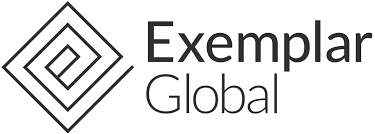 Here’s 6 steps we use when writing Safe Work Method Statements (SWMS).
Here’s 6 steps we use when writing Safe Work Method Statements (SWMS).
1. Title Page
When preparing the title page of a SWMS it is important the following information is available to the reader.
- Work Activity
- Project Name
- Project Address
- Client
- Persons involved in the development & Approval of the SWMS
- Company Name
- Company Address
- Company ABN
- Equipment Used
- Training/Licensing
- Hazardous Substances
- Permits to Work
- High Risk Work
- PPE Required
- Legislation/Standards Referenced when preparing document
2. Risk Matrix
A SWMS should contain a risk matrix that outlines how the hazards will be assessed and rated in terms of consequence and likelihood and what each rating corresponds to in a matric table.
- Step 1. – Identify the credible consequence for each unwanted event
- Step 2. – Determine the likelihood of the event occurring and it resulting in the consequence
- Step 3. – Utilise the risk matrix to identify the risk and risk rating.
3. SWMS Body
The body of the SWMS should be tabular in form and contain the following headings
- Activity Step – 1,2,3,4 etc.
- Activity Process – Job Planning/Induction, Initial Site R.A, Delivery of Materials
- Possible Activity Hazards – Crush injury from plant collisions, Impact injury from falling loads, Electrocution via Overhead Lines etc.
- Initial Risk Score – The corresponding risk score for the hazard, before controls, from the matrix as calculated by the person preparing the SWMS
- Control Measures – What measures are being taken to reduce both the consequence and likelihood of the risk. Control measures should be identified in line with the hierarchy of control. Elimination – Substitution – Engineering – Admin – PPE
- Residual Risk Score – The corresponding risk score for the hazard, after controls, from the matrix as calculated by the person preparing the SWMS
- Control Responsibility – Who has the responsibility of implementing the controls
4. SWMS Work Team Sign On
All employees involved in the works activities must sign onto the SWMS document to acknowledge:
- They have been given the opportunity of SWMS input
- Read and agree with the contents
- Agree to use and work kin accordance with the SWMS
- Will stop immediately if the SWMS cannot be followed
This section is usually tabular in form and with the following headings:
- Employee Name
- Employee Signature
- Date
5. SWMS Amendments Page
A blank SWMS body page with the same headings as the SWMS body above should be available in the rear of the SWMS or at the end of the SWMS initial body to allow for additional/variation work activity SWMS input.
6. SWMS Amendments Work Team Sign On Page
All employees involved in the additional/variation works must review the amended SWMS section and sign on to the SWMS amendment sign on page.
Posted By: Cathal Uniacke – cathal@custodiansafety.com.au



